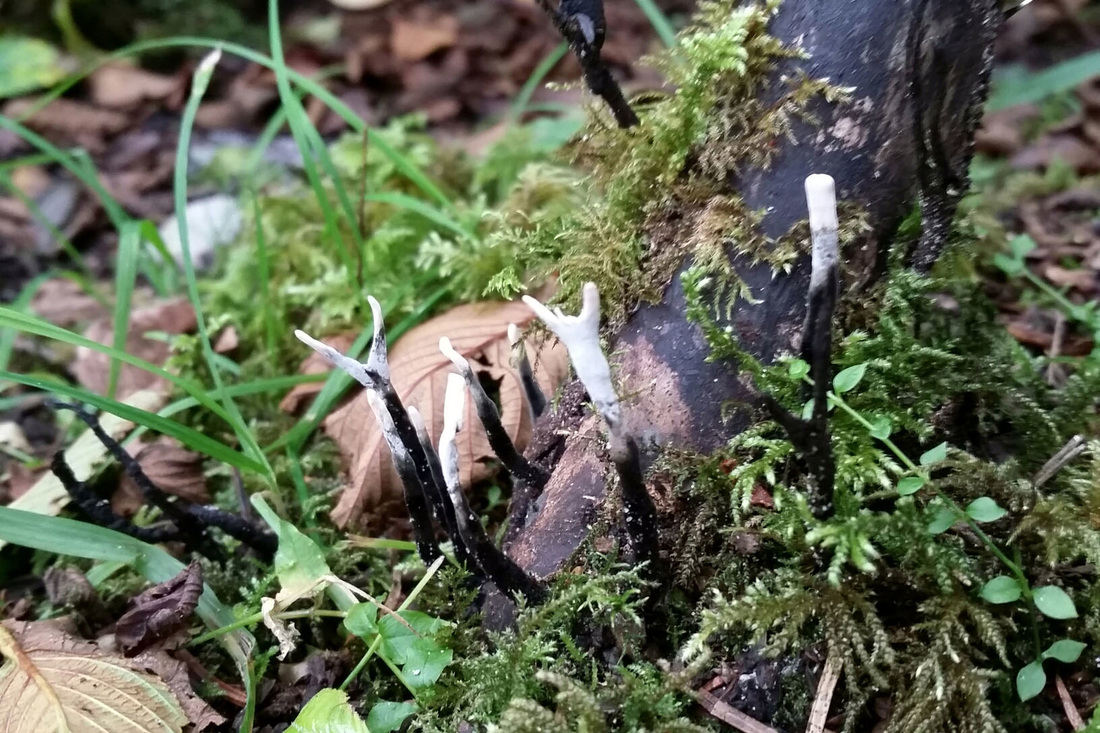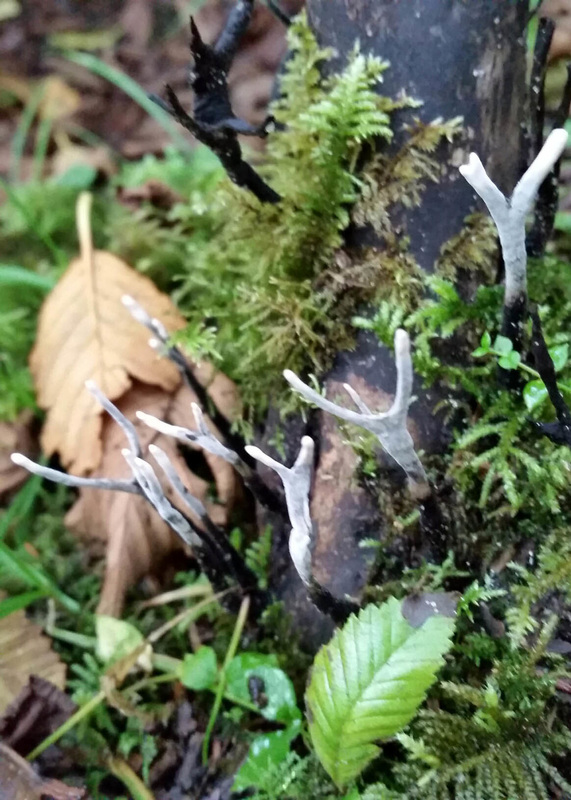Carbon antlers, candlesnuff fungus • Xylaria hypoxylon
Identification
This fungus produces forked, antler-shaped fruiting bodies that grow 4-8 cm tall on a thin stalk. These tough, upright "antlers" are often two-toned: the lower portion is black, while the upper portion is covered in powdery white asexual spores (conidia). Once the spores disperse the top portion turns black. Young fruiting bodies are initially unforked.
Click here for photos of different stages.
Habitat & Range
Carbon antlers grow on dead wood, such as rotting logs and stumps, throughout North America. Fruiting bodies grow during different times of the year in different regions.
Similar Species
Some coral mushrooms, such as Clavaria species, can produce similarly slender, forked fruiting bodies; these fungi have a fleshy texture, however, instead of the woody, tough texture of carbon antlers. Dead man's fingers (Xylaria polymorpha) produces thicker, finger-like clubs.
iNaturalist
https://www.inaturalist.org/taxa/55267-Xylaria-hypoxylon
This fungus produces forked, antler-shaped fruiting bodies that grow 4-8 cm tall on a thin stalk. These tough, upright "antlers" are often two-toned: the lower portion is black, while the upper portion is covered in powdery white asexual spores (conidia). Once the spores disperse the top portion turns black. Young fruiting bodies are initially unforked.
Click here for photos of different stages.
Habitat & Range
Carbon antlers grow on dead wood, such as rotting logs and stumps, throughout North America. Fruiting bodies grow during different times of the year in different regions.
Similar Species
Some coral mushrooms, such as Clavaria species, can produce similarly slender, forked fruiting bodies; these fungi have a fleshy texture, however, instead of the woody, tough texture of carbon antlers. Dead man's fingers (Xylaria polymorpha) produces thicker, finger-like clubs.
iNaturalist
https://www.inaturalist.org/taxa/55267-Xylaria-hypoxylon
References
Gibson, I. Xylaria hypoxylon (L.) Grev. In Klinkenberg, Brian (Editor). E-Flora BC: Electronic Atlas of the Plants of British Columbia. Lab for Advanced Spatial Analysis, Department of Geography, University of British Columbia, Vancouver. Accessed 21/09/2015.
Lincoff, G. H. The Audubon Field Guide to North American Mushrooms. New York: Alfred A. Knopf, P. 376.
Authors and editors of page
Kelly Fretwell and Brian Starzomski (2015).
Gibson, I. Xylaria hypoxylon (L.) Grev. In Klinkenberg, Brian (Editor). E-Flora BC: Electronic Atlas of the Plants of British Columbia. Lab for Advanced Spatial Analysis, Department of Geography, University of British Columbia, Vancouver. Accessed 21/09/2015.
Lincoff, G. H. The Audubon Field Guide to North American Mushrooms. New York: Alfred A. Knopf, P. 376.
Authors and editors of page
Kelly Fretwell and Brian Starzomski (2015).






